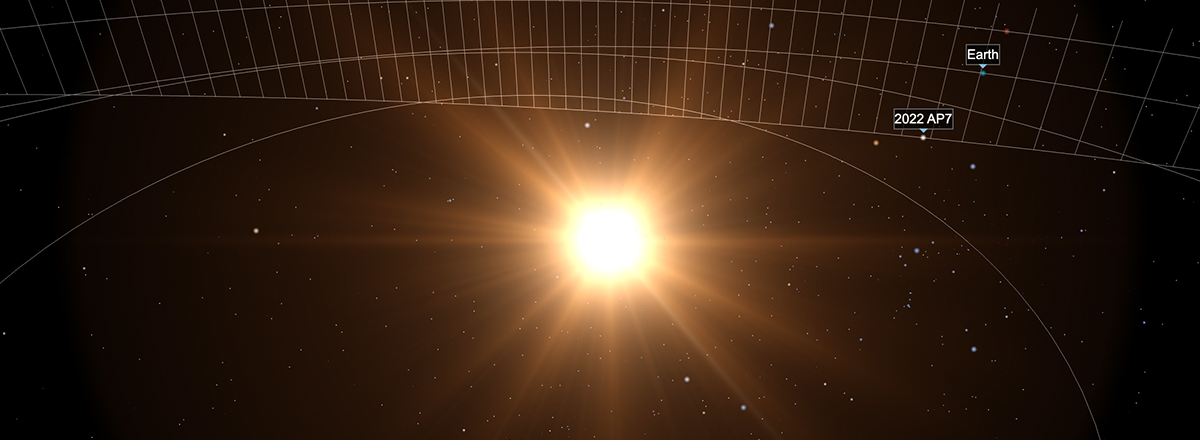Astronomers Discover a Huge Planet Killer Asteroid
Over time, the movement of this asteroid will sync with that of the Earth, and it will cross much closer by, but it will happen centuries into the future. Any asteroid over 1km in size is considered a planet killer and enough to trigger a mass extinction event on Earth.

Lead study author Scott Sheppard and colleagues at the Carnegie Institution for Science in Washington have found three rather large near-Earth asteroids that were previously obscured by the Sun's glare.
One of them, a “possibly harmful” asteroid named 2022 AP7, stands out because of its possible future crash route with our Earth. It is also thought to be the greatest planet-killer-sized asteroid and the largest object potentially hazardous to Earth to have been discovered in the last eight years, the team said. Fortunately, it won't pose a threat to the Earth for at least a few more centuries.
The asteroid was detected by researchers using the Dark Energy Camera in Chile to look for space objects within the orbits of Earth and Venus. Their findings were published in The Astronomical Journal.
2022 AP7, which can potentially destroy the planet on impact, has a diameter between 1.1km to 2.3km and orbits the Sun every five years. At present, it crosses the Earth's orbit when the Earth is on the other side of the Sun.
Over time, the movement of this asteroid will sync with that of the Earth, and it will cross much closer by, but it will happen centuries into the future. Generally, any asteroid over 1km in size is considered a planet killer and enough to trigger a mass extinction event on Earth.
There is currently little known about 2022 AP7, including information on its route and composition, but the good news is that since this asteroid has already been detected, scientists can now continue to monitor its behavior over time to predict possible danger.
Even though scientists don't see it as an immediate threat, the discovery of such a large celestial body dangerously close to us and so late is reason to suspect that other planet killers may be lurking in the Sun's light.
It is estimated that scientists have already identified about 95% of potentially hazardous asteroids, and there are fewer than 1,000 of them. However, the study by Sheppard and colleagues notes that discovering the remaining 5% (about 50 asteroids) will require a huge effort.

